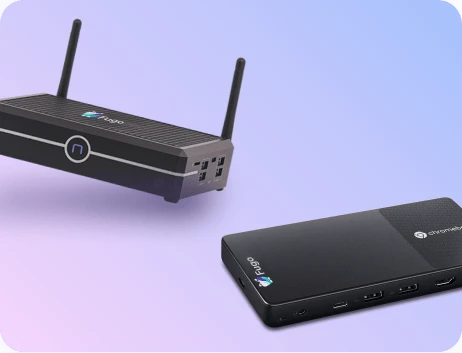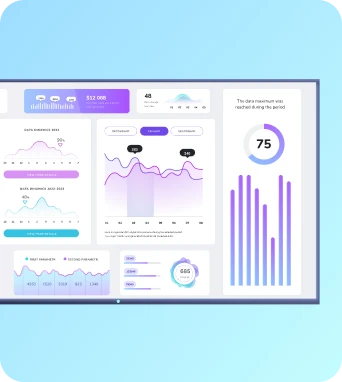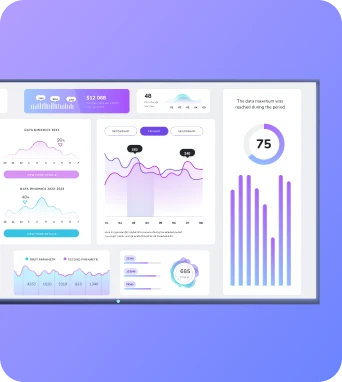Animated widgets
Animated widgets are dynamic, self-contained content modules for digital signage that use vector animation, sprite sequences or timed transitions to convey information. They combine data bindings, animation timelines and lightweight assets to deliver attention-grabbing, loopable content on TV dashboards, workplace displays and networked signage players.
What is Animated widgets?
Rendering architectures and asset pipelines for animated widgets
Understanding the rendering architecture of animated widgets is crucial for reliable deployment across signage players. At a basic level a widget consists of assets (SVGs, PNG sprites, JSON animation data), an animation engine (CSS animations, requestAnimationFrame loops or a Lottie player), and a data binding layer that injects live content into the visual state. On a typical Linux-based Android player running a signage agent, the widget will be executed in a sandboxed runtime — often a lightweight browser engine or a dedicated native renderer — which interprets the animation instructions and composite layers on the GPU when available. For example, a KPI widget might use an SVG base, animate an arc with CSS keyframes or SVG SMIL, and update text nodes with incoming JSON from an internal API every 30 seconds. In this scenario the asset pipeline must ensure SVGs are optimised, embedded fonts are minimal, and any external API calls are cached or proxied by the signage server to reduce client load. When you author widgets for platforms like Fugo.ai, you need to consider fallbacks and player capability detection. A Lottie JSON animation offers smooth vector motion and small file size, but some older players may not support the native Lottie runtime; Fugo’s player SDKs commonly include a bundled Lottie renderer to keep behaviour consistent. Inline examples include using requestAnimationFrame to drive a progress ring that updates based on a published MQTT feed, or embedding a small JavaScript module that throttles DOM updates to prevent layout thrashing when a data feed spikes. Asset delivery strategies also matter: host static assets on a CDN with proper cache headers, version filenames to force updates, and compress JSON and SVG files. For teams managing hundreds of displays, an efficient pipeline that minifies SVG, compresses sprite sheets, and pre-renders heavy effects into fallback PNGs will significantly reduce CPU overhead and avoid frame drops during playback.
Deployment, monitoring and optimisation of animated widgets in signage estates
Deploying animated widgets across a mixed signage estate requires attention to compatibility, performance budgets and monitoring. Begin by defining a target device profile: CPU class, GPU presence, memory limits and browser or webview versions. Use that profile to set asset budgets per widget, for example keeping Lottie JSON files under a few hundred kilobytes, limiting SVG path complexity and avoiding heavy filters that force repeated paints. When rolling out a widget in Fugo.ai or a similar CMS, test on representative devices. Implement staged rollouts where the widget is first scheduled to a small subset of players to observe CPU usage, frame rate and network requests. Practical considerations include scheduling refresh intervals to align with data update rates, utilising the platform’s caching mechanisms to prevent identical API calls from repeatedly hitting origin servers, and setting sensible timeouts and retries for external feeds to avoid blocking the widget’s animation timeline. Common pitfalls include unbounded animation loops that leak memory through retained DOM nodes, frequent synchronous layout-changing updates triggered by data spikes, and reliance on unavailable third-party fonts or resources. To avoid these, author widgets with defensive coding patterns: detach listeners on unload, use virtual text nodes or canvas drawing when repeated DOM writes are necessary, and adopt size-based throttling so that widgets in small tiles update less frequently than fullscreen content. Monitoring is essential; integrate application-level telemetry that records render times, dropped frames and fetch latencies, and forward those metrics to a central dashboard. Fugo.ai users can map these metrics to playlists and triggers so that, if a widget exhibits degraded performance, the CMS can automatically swap in a simpler fallback or notify an admin. Optimisation techniques also include precompositing static layers into a single image, using CSS transforms for motion rather than top/left changes, and offloading heavy data aggregation to the backend so the client-side widget only receives the minimal payload necessary for rendering.
Final Thoughts on Animated widgets
Keep the learning going...
Android digital signage player
An Android digital signage player is an Android device or dedicated application that delivers scheduled multimedia playlists, HTML5 dashboards and data-driven layouts to TV and workplace displays. It connects to cloud platforms such as Fugo.ai for remote provisioning, content updates, reporting and integration with calendars, APIs and business intelligence feeds to automate screen content.
Anti-glare coatings
Anti-glare coatings are thin surface treatments applied to display glass or acrylic that diffuse specular reflections and reduce visible glare. In digital signage they improve legibility, contrast and colour fidelity in bright or mixed lighting, helping TV dashboards and workplace displays remain readable from multiple viewing angles and under ambient light.



